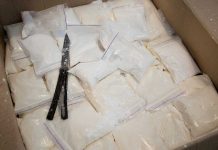
(NewsInsights.org) – In the wake of the horrific Francis Scott Key Bridge accident in Baltimore, Maryland, many are trying to understand how such an event could have occurred, especially in light of lessons learned from similar tragedies. Media outlets have sought out engineering specialists for answers. One structural engineer expressed surprise at the collapse.
Fox News reached out to John Pistorino, a Miami-based Professional Engineer (PE) specializing in code compliance for bridges, highways, high-rise condominiums, and residential buildings, among other projects. Almost immediately, the Florida-based engineer compared the Key Bridge accident to the devastating Sunshine Skyway Bridge collapse that occurred in May 1980. In that incident, the Summit Venture, a 609-foot freighter, sheared off a bridge support, causing a 1400-foot expanse of the bridge to drop into Tampa Bay during the morning rush hour.
Pistorino pointed out several lessons learned from the Tampa Bay tragedy, including the importance of “dolphins.” These are permanent sacrificial underwater structures anchored to channel beds that divert out-of-control ships and barges away from critical bridge support structures. Another expert, Alan Hayward, a retired bridge design engineer, mentioned that the Baltimore structure appeared to have a single dolphin structure on either side of the support columns but certainly nothing rugged enough to deter “anything other than small vessels.”
The second lesson Pistorino said designers learned from the Sunshine Skyway Bridge collapse in 1980 was the importance of structural redundancy. He told Fox News, “If we lose the critical part of one column, the structure itself tries to redistribute the load and then goes to the other column.” He said the other column became overloaded in this case.
Yet, other experts disagreed. Dr. Andrew Barr, a University of Sheffield Civil and Structural Engineering Research Fellow, said the 984-foot Dali freighter’s collision with the Key Bridge support column “far exceeded the design loads” for the concrete pier structure that supported the 1.6-mile truss bridge. While he called the truss design efficient, he said the collapse became inevitable after the Dali destroyed the support pier, causing a “progressive collapse.”
In addition to sacrificial dolphins, Robert Benaim, an Engineering Fellow at the Royal Academy, said some designers prefer using artificial islands in channels to protect critical piers from collisions with large ships.
Copyright 2024, NewsInsights.org

















